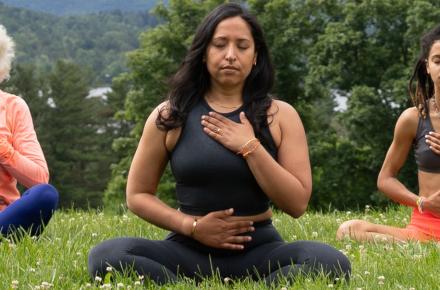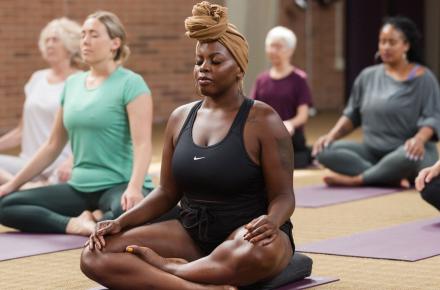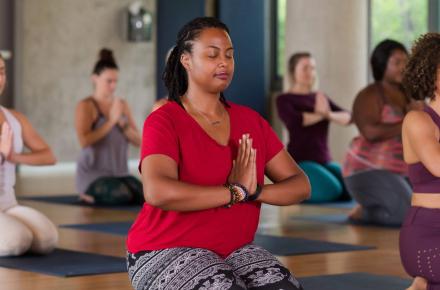How to Love Winter


Autumn has always been my favorite time of year. I love the crispness in the air, the warm-but-not-too-hot days, the cooler nights, the vibrantly colored leaves shimmering in the trees. But it’s also a bittersweet time of year—a time tinged with feelings of loss. I know winter’s coming and, for those of us living in colder climates, it’s daunting.
I thought I was leaving it all behind when I moved to Los Angeles a few years ago. I packed my coats, sweaters, knitted hats, and gloves in boxes I didn’t think I’d be opening again, unless I was headed on a ski trip to Colorado. But I was surprised to find that living in a climate that changes little throughout the year, where it’s almost always sunny and warm, is actually rather monotonous.
During the nearly three years I lived in Southern California, I missed having an excuse to stay inside and read by a fire during a snowstorm. I missed the way the snow gracefully decorates the trees, magically transforming the landscape in a matter of hours. I even missed my winter wardrobe. Now that I’m back in New England, I realize that the coldest season of the year bears its own special gifts, if we’re willing to take advantage of them.
“In the northern hemisphere, winter is the time with the least amount of daylight, so this becomes the time to do practices that are more introverted in nature,” says Erin Casperson, Dean of the Kripalu School of Ayurveda. “Winter season is also considered the time of year to replenish one’s physical reserves.”
In Ayurveda, winter is the vata time of year; the atmospheric qualities are cold, dry, and windy. “Ayurveda’s first cardinal rule,” says Erin, “is to implement practices with the opposite qualities of the season; opposites bring balance. Winter is ample for getting more sleep to replenish the nervous system, practicing self-massage, practicing yoga in a warm room, and eating foods that are nourishing.”
If you’d like to do more than simply endure another winter, here are some ways to thrive during the frostiest time of the year.
Nourish Yourself
Favor a winter harvest. Cooked seasonal vegetables like winter squash, sweet potato, parsnips, beets, carrots, grains, and lean meat are excellent choices. “Turn on the oven and stovetop for hearty stews and warming casseroles,” says Erin. “Be mindful to combat the dry quality of the season by incorporating healthy oils like ghee and olive oil into your dishes. Favor cooked fruits or a hot grain cereal for breakfast over a smoothie or cold fruit. Bring soups and stews to work for lunch in an insulated thermos. Roast veggies and bake breads for a light dinner.”
Focus on self-care. To stay healthy and balanced in the winter, Ayurveda invites doing that “which keeps us warm, moist, and grounded,” says Sudha Carolyn Lundeen, Ayurvedic Lifestyle Consultant and Kripalu faculty member. “It really helps to massage the skin with a warm organic oil such as sesame, as well as applying a little nasya oil in the nose. Follow that with a slow flow yoga practice to work out the kinks.”
Get Outside
“There’s no such thing as bad weather, only bad clothing,” says Micah Mortali, Director of Outdoor Education and Programming. “If you live somewhere that gets cold during winter, invest in high-quality outdoor gear. Being outside breathing the fresh, clean air makes us feel more alive. It’s invigorating.”
Find a sunshine sit spot. “This is a simple yet powerful way to connect with the seasonal sun cycle and your natural circadian rhythm,” says Mark Roule, Kripalu Yoga teacher and Kripalu faculty member. “The ‘sunshine sit spot’ helps to reset and rebalance, especially after looking at the cold blue light of computer devices.”
Look for a south-facing, wind-protected nook outside, in the most natural setting available. Visit once or twice a day, says Mark, or more if you have time. Dress warmly and bring along a thermos of your favorite hot beverage. Establish a comfortable seat facing the sun. Do not wear contacts, eyeglasses, or sunglasses of any kind. For five to 10 minutes, breathe fully and deeply. Be sure your eyes are receiving light from the sun.
Follow tracks in the snow. Get outside when there’s snow on the ground and look for animal tracks. “See if you can identify which animals made them,” Micah says. “As you do this, stay in the present moment and allow your awareness to open up to the communities of creatures that you share your environment with. There’s so much we can learn from nature.”
Go Within
Do early-morning meditation. Winter, with its increased darkness, is an excellent time to begin an early morning meditation practice. “The stillness and extra darkness of the morning hours is prime time for meditation,” says Erin. “The hour before sunrise is called “brahma mahurta’ and is considered by yoga and Ayurveda to be the most subtle time of day to shift the awareness inward and deeply listen to the still, small voice within.”
Breathe. Yogic breathing can be a very effective way to shift the mind state. “If you’re feeling anxious in the winter,” says Erin, five to 15 minutes of Dirgha pranayama (Three-Part Breath) or Nadi Shodhana (Alternate-Nostril Breath) might be just what you need to soothe an excitable nervous system.”
Mix It Up
Winter is ideal for investing in activities you’d never have time for in summer weather. “It’s a great time of year to discover your untapped creativity and interests,” says Erin.
Try something new. Pick up knitting, complete a 1,000-piece puzzle, learn a new musical instrument, or join a community choir. “Singing is amazing for pumping up the endorphins,” remarks Sudha.
But most important of all, remember that winter isn’t forever. After the solstice, the days get longer and spring is inevitable. Let’s enjoy winter while it’s here!



















































